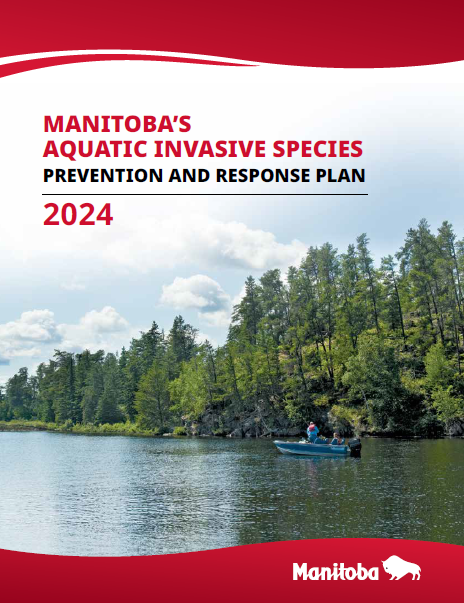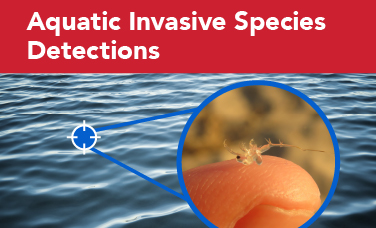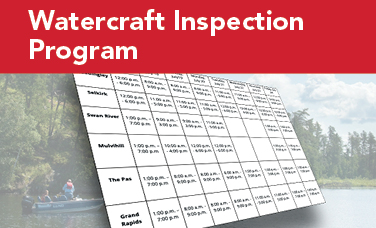 |
Aquatic Invasive Species

Manitoba's Aquatic Invasive Species Prevention and Response Plan
Manitoba's Aquatic Invasive Species Prevention and Response Plan was released on July 9, 2024.
Manitoba's Aquatic Invasive Species Prevention and Response Plan provides information on:
- aquatic invasive species of most concern in Manitoba and outside of Manitoba, how to identify them, where they are located and how they can be transported from one waterbody to another;
- actions the Manitoba government is taking to proactively manage aquatic invasive species; and
- actions that individuals and communities can take to prevent the movement of aquatic invasive species.
Everyone has a role to play in preventing the spread of aquatic invasive species. Read Manitoba's Aquatic Invasive Species Prevention and Response Plan to learn more about what you can do. As a first step, please consider sharing this poster.
What are Invasive Species?
Broadly speaking, an invasive species is an organism (e.g., animals, plants, parasites, viruses etc.) not native to a region that when introduced, either intentionally or accidentally, may out-compete native species for available resources such as food and space.
In many cases, invasive species become successful in their new environments due to their high reproductive rates and absence of native predators and diseases.
Invasive species can have negative economic, social, environmental and human health implications.
What are Aquatic Invasive Species (AIS)?
An aquatic invasive species (AIS) can either live in freshwater or marine environments. The majority of the species of concern to Manitoba, such as Zebra Mussels, Spiny Waterflea, Rusty Crayfish, Quagga Mussels and Xenocarps, are freshwater species.
In Manitoba, fish, invertebrates, plants and algae that are designated as AIS are listed in Schedule A of the AIS Regulation.



